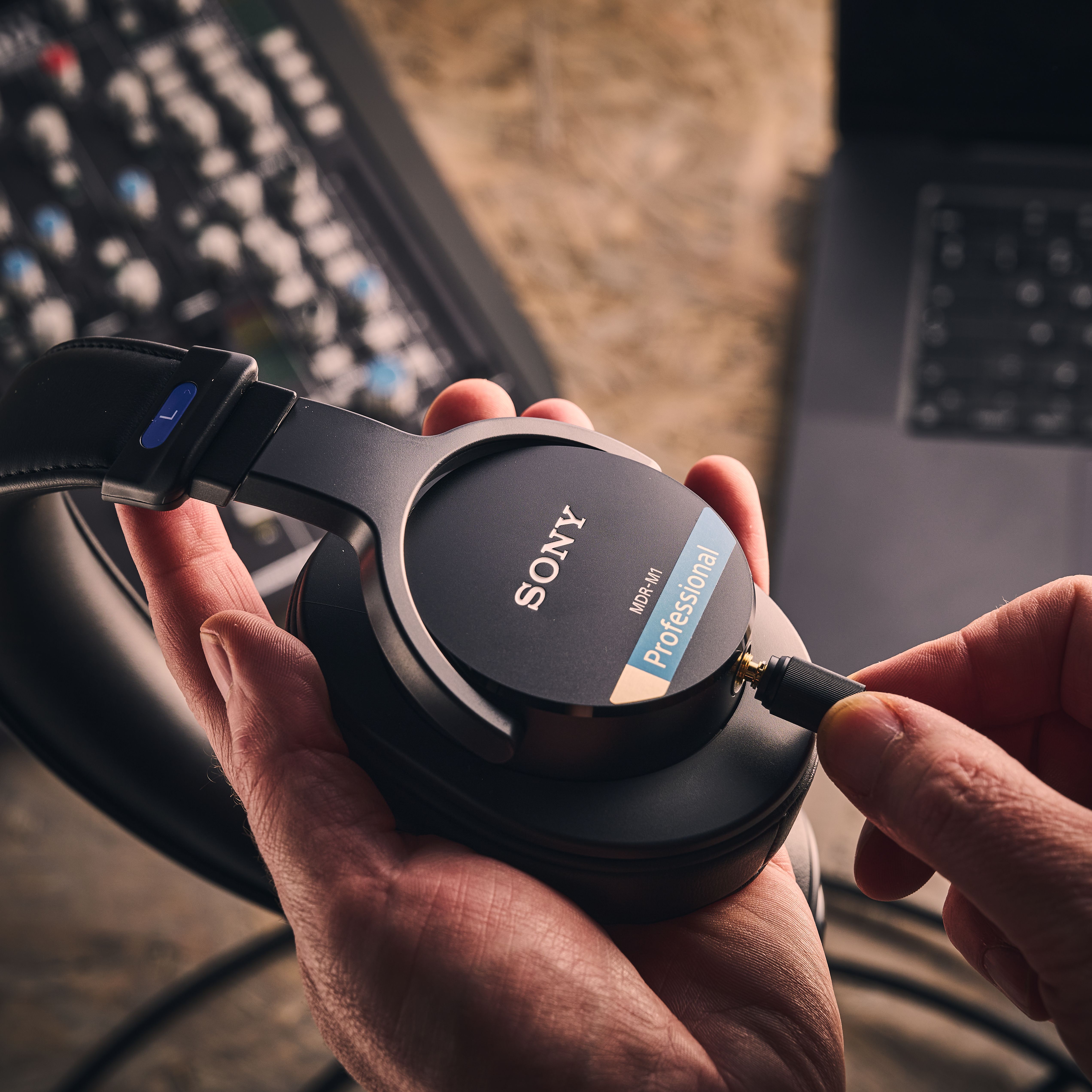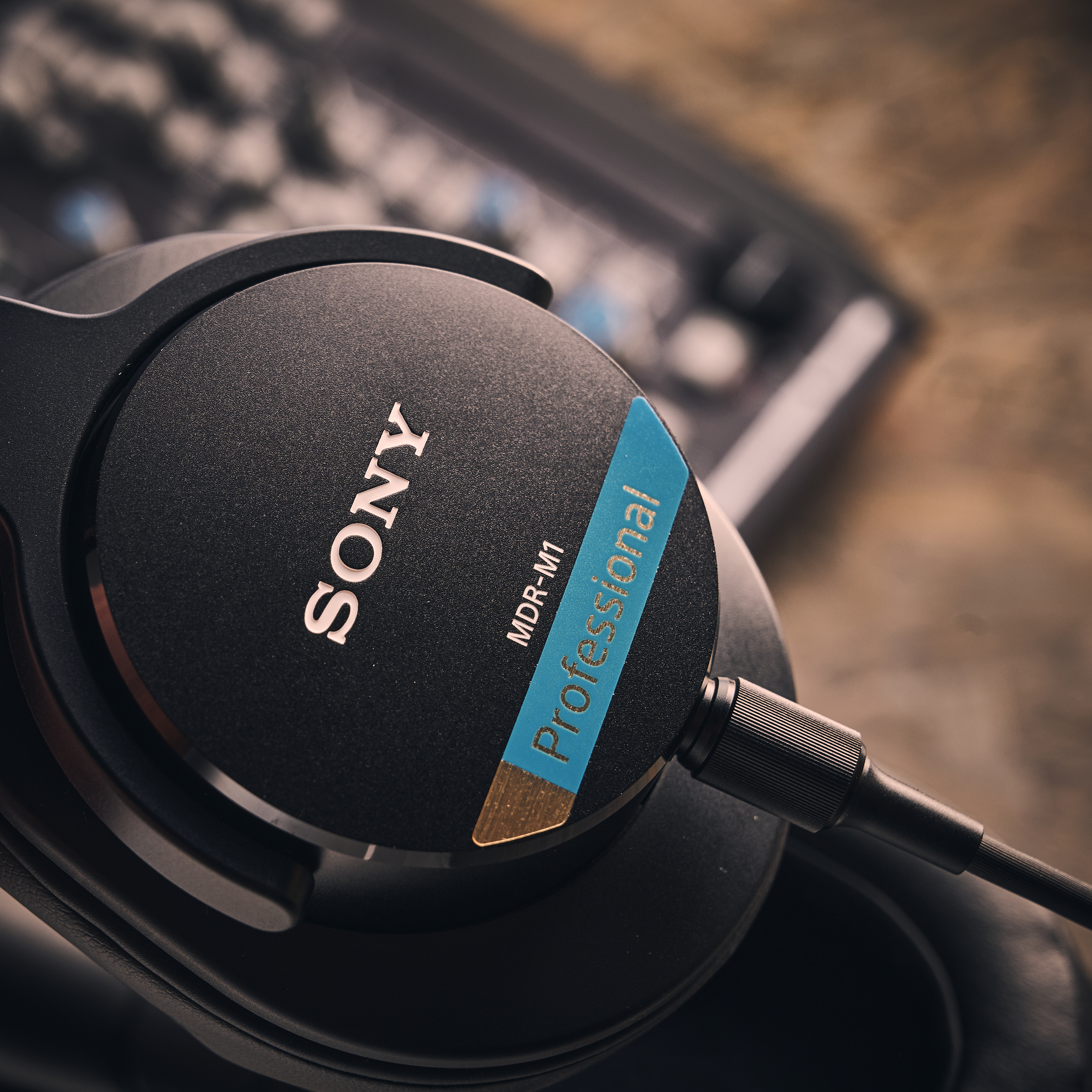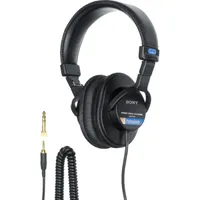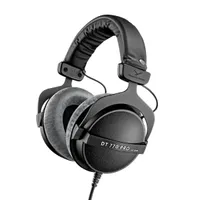MusicRadar Verdict
If you’re a fan of the MDR-7506s and are looking for an upgrade, then these aren’t the headphones for you. The Sony MDR-M1s may be the spiritual successor to Sony’s Scheps-approved mixing cans, but they tread their own path. The balance of sound across the spectrum is really nice, and I love the tame high end, which makes them really well adapted to monitoring and tracking over long periods of time. For mixing, though, I’d prefer something with a little more detail in the very high and low-end.
Pros
- +
Nicely balanced sound great for monitoring and mixing.
- +
Good sensation of separation in the stereo field.
- +
Lightweight and comfortable for longer listening sessions.
- +
Comes with multiple cables and replaceable pads.
Cons
- -
Bit lightweight on the very low end.
- -
There are a lot of other options at this price point.
MusicRadar's got your back
What is it?
The Sony MDR-M1 studio headphones are the successor to that most iconic set of cans in the MDR-7506, designed to build upon the legacy by providing several improvements. If you’re looking for a 7506 replacement though, you’ll find these are a very different proposition indeed.
They’re considerably more expensive for a start, retailing at $269.99 versus the 7506’s much more reasonable $109.99, which is interesting considering the differences between the two are relatively small. The MDR-M1s feature a wider frequency response, a lower impedance, a detachable cable that isn’t coiled, and are ever so slightly lighter by a few grams.
The cups have also had a redesign with comfort in mind, featuring the same spec of drivers but newly built for this model. The exposed wires are gone too, which for most people will be a welcome addition. Unlike the 7506s, the pads of the MDR-M1 only swivel, which does make them slightly less transportable.


Performance
Whenever I get a new pair of cans, my first test is to listen to some of my favourite reference tracks, music I know every inch of. Kicking off with the bass test, I popped on Lil Wayne’s ‘A Milli’ to see how they handle the low end. The MDR-M1s certainly have more bass than the MDR-7506, but it’s very well behaved. My usual Beyerdynamic DT 990 Pros are decidedly more detailed in the super low stuff, but these have a nice balance to them that gives you a good overview of the lows without feeling overpowering.
Looking for something a little more complex, I move on to Radiohead’s ‘Paranoid Android’ to see how they perform with a busier mix. I’m impressed again; there’s a really nice balance across the whole spectrum. The frequency response is V-shaped, so in terms of sound, they’re very different from the 7506s, with none of the clean mids that are a signature of those cans. I also find the highs to be quite tame, which I end up enjoying as they’re less fatiguing when you’re listening over a long period of time.


Speaking of time, they’re incredibly comfortable, with the lightweight design almost allowing me to forget I had them on. They’re much more cosy than my usual DT 990s, and even after hours of tracking some guitars in my home studio, I didn’t feel any aches from the headband or the pads pushing on my ears. They're synthetic leather, but didn't feel sweaty despite a heatwave during my review.
The inclusion of two cables is nice, especially as I’m not a huge fan of the coiled cable that comes with 7506s. The short length is great for working at the laptop or using the audio interface at a home studio desk, while the longer one is ideal for tracking and general monitoring duties. The cables screw into the left-hand side of the headphones, so swapping them out is nice and quick, and you can easily sort a replacement if need be.
Want all the hottest music and gear news, reviews, deals, features and more, direct to your inbox? Sign up here.

Verdict
If you’re a fan of the MDR-7506s and are looking for an upgrade, then these aren’t the headphones for you. The Sony MDR-M1s may be the spiritual successor to Sony’s Scheps-approved mixing cans, but they tread their own path. The balance of sound across the spectrum is really nice, and I love the tame high end, which makes them really well adapted to monitoring and tracking over long periods of time. For mixing, though, I’d prefer something with a little more detail in the very high and low-end.
Hands-on videos
SoundGuys
GadgetryTech
Sean Divine
Alternatives
Why go for the successor when you can have the original? The MDR-7506s are still a great set of headphones for mixing once you learn their idiosyncrasies, and they’re much cheaper than the MDR-M1s.
<p><strong>Read more: <a href="https://www.musicradar.com/reviews/sony-mdr-7506-headphones-review" target="_blank"><u><strong>Sony MDR-7506 reviewThe AKG K271s are incredibly comfortable thanks to the large ear pads and lightweight design. They’re a little lightweight in the very low end, but are still a capable set of cans for mixing and monitoring duties.
<p><strong>Read more: <a href="https://www.musicradar.com/reviews/akg-k271-mkii-review"><u><strong>AKG K271 reviewOne of the most used headphones for monitoring in pro studios the world over, the Beyerdynamic DT 770 Pros are a superb all-rounder for mixing, monitoring, and anything else.
<p><strong>Read more: <a href="https://www.musicradar.com/reviews/beyerdynamic-dt-770-pro-review" target="_blank"><u><strong>Beyerdynamic DT 770 Pro reviewSpecifications
Price | $269.99/£209 |
Design | Closed back, over-ear, dynamic |
Driver | 40 mm |
Transducer magnet | Neodymium |
Impedance | 50 Ohm |
Frequency Response | 5 Hz - 80,000 Hz (JEITA) |
Sensitivity | 102dB/mW |
THD | N/A |
Connection
| 2x detachable cables with gold, stereo Unimatch plug 1/4" and 1/8" |
Ear pads
| Synthetic Leather |
Ear cups | N/A |
Included extras
| 2x detachable cables |
Weight | 216 |
Contact |

Matt is a Junior Deals Writer here at MusicRadar. He regularly tests and reviews music gear with a focus on audio interfaces, studio headphones, studio monitors, and pretty much anything else recording-related. Matt worked in music retail for 5 years at Dawsons Music and Northwest Guitars and has written for various music sites including Guitar World, Guitar Player, Guitar.com, Ultimate Guitar, and Thomann’s t.blog. A regularly gigging guitarist with over 20 years of experience playing live and producing bands, he's also an alumnus of Spirit Studios, where he studied studio engineering and music production.
You must confirm your public display name before commenting
Please logout and then login again, you will then be prompted to enter your display name.






